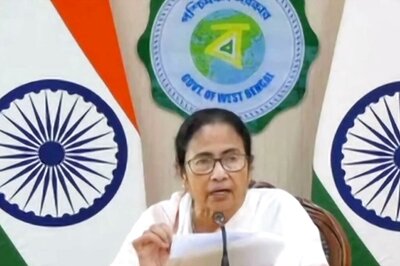
views
If the observations made in the Economic Survey 2019-20 tabled in Parliament by Union Finance Minister Nirmala Sitharama on Friday are an indicator, the Union Budget to be presented on Saturday will focus on reforms and consolidation in the agriculture and the food sector.
The three areas of reforms the Survey highlights are land, labour and food subsidy. A major area of concern is identified as residue burning, which causes pollution in parts of north India.
A recent development is the spike in food prices owing to delinquent monsoon, leading to double digit inflation at 7.4% and the decline in the GDP growth to 2.1% in the second quarter of 2019-20 in agriculture. The Survey notes that inflation is a monsoon-related phenomenon and will dissipate by the end of the year.
The survey has introduced a new element of “thali -- a plate of food”, claiming that since 2015 the average affordability of vegetarian thalis improved 29% from 2006-07 to 2019-20 while that for non-vegetarian thalis by 18%, depending upon the region to which one belongs.
Although the contribution of agriculture in the national income has declined to 16.5% in 2019-20 from 18.2% in 2014-15, its contribution is central to rural livelihood, employment and national food security. More than 50% of rural households depend on agriculture for their livelihood, with 82% of farmers being small and marginal.
While 82% of farmers in India are small and marginal with a landholding of 2.5 acres or less, the focus in the Survey on mechanisation is over-emphasised. In states like Bihar, parts of Uttar Pradesh, Chhattisgarh, Madhya Pradesh and even the Vidarbha region in Maharashtra that have a concentration of small and marginal farmers, farming is done in the traditional method. Moreover, it is a known fact that precision and such mechanised farming require huge tracts of land.
The Survey has not lost sight of the government’s goal of doubling farmers’ income by 2022 and for this it seeks more investment, creation of irrigation facilities, better availability of institutional credit, higher productivity, better linkages between the agriculture sector and non-agriculture sector and a significant boost to the allied animal husbandry and fisheries sector for which a separate department has been created. All this is knowledge but the “how” and “by when” is missing.
Land reforms have been pending for a long time and the Survey makes a mention of it, more for facilitating farm mechanisation than being inclusive for share croppers and others depending on land which is getting fragmented by the year. The Survey suggests farmers shift from subsistence farming to commercial agriculture, which is declared goal of the Narendra Modi government.
The government has recently been focusing on giving an impetus to farm exports, with India being the largest or second largest producer in cereals, milk, fruits and vegetables. While the Survey reiterates this, it has not come up with concrete suggestions in the areas of regulation, technology, capacity building, quality and standardisation.
Efforts are being made since the past few years to give a boost to the food processing sector, with huge incentives for the private sector to invest. In the last six years, the sector has been growing at a rate of 5.83%. The private sector has been receiving huge incentives to participate but has not shown signs of investing in the sector yet.
The Survey does, however, talk about hiking the price at which foodgrains are being given to poor under the National Food Security Act running a subsidy bill of Rs 1,71,127.5 crore in 2018-19. The price of providing wheat at Rs 2 per kilogram, rice at Rs 3 per kilogram and coarse cereals at Re 1 per kilogram to identified poor needs to be revisited, it says. This has not been done since 2013.
This a sensitive topic with politicians and beneficiaries alike and will prove to be unpopular if implemented.
(Gargi Parsai is a senior journalist based in New Delhi.)




















Comments
0 comment